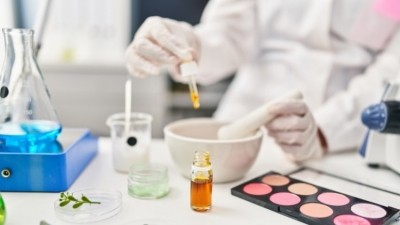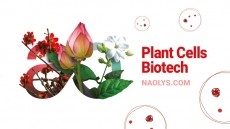Phage turner: Why skin care products could benefit from environment-sourced phages

While Staphylococcus spp. typically coexists harmlessly on human skin, the entry of these bacteria into wounds on punctured or broken skin can lead to various clinical infections.
Despite multiple recommended antibiotics for treating Staphylococcus spp., the bacteria's adaptability often results in resistance to one or more antibiotics.
Antimicrobial agents derived from both natural and synthetic sources have shown effectiveness against a broad spectrum of Staphylococcus infections. However, concentrated forms of these agents may cause skin irritation.
In pursuit of alternative solutions, researchers are now investigating phages - naturally occurring viruses of bacteria present in the environment.
These phages could serve as an alternative to antibiotics for medical purposes, particularly in controlling pathogenic bacteria, including multidrug-resistant (MDR) strains.
In this study, 13 Staphylococcus were utilised. This consists of four Staphylococcus aureus and two Staphylococcus capitis and Staphylococcus epidermidis previously obtained from human skin (acne), as well as four S. aureus, sourced from clinical, purulent wound samples of patients.
Separately, 17 Staphylococcus phages were isolated from the collected wastewater and soil samples.
The phages demonstrating the highest percentage of lytic ability (i.e., effectively breaking open and destroying bacterial cells) were chosen for assessing the efficiency of plating (EOP) — a measure of their ability to reproduce and spread.
To evaluate phage activity, three representative Staphylococcus isolates were mixed with phages at concentrations of 7 and 8 log PFU/mL, while a control group consisted of Staphylococcus culture without phage lysate.
Staphylococcus cell counts were monitored at six-hour intervals over 24 hours using a spread plate technique on tryptic soy agar (TSA).
The impact of solidant DMH, a cosmetic ingredient derived from the preservative system Glydant, on phage activity was investigated by exposing phages to varying concentrations of solidant DMH.
A cosmetic serum was formulated using sterile DI water (93.675%), hydroxyethyl cellulose (HEC, 1.2%), glycerine (3%), and solidant DMH (0.125%), following the formulation provided by the cosmetic ingredient supplier, CHEMIPUN Corporation Ltd., with slight modifications.
The skin care serum containing the phage was stored in amber glass bottles at 4, 25, and 37°C, and its phage survivability was evaluated on days 0, 14, 30, 60, and 90 of storage.
Efficacy of phages
The phages exhibited 12 distinct lytic profiles across 13 Staphylococcus isolates.
Phage A1 displayed the highest lytic ability against five S. aureus and two S. capitis isolates (53.8% lysis), followed by phage A2 (23.1% lysis). Notably, the phages demonstrated specific lysis only against their natural host of isolation, with a 7.7% lytic ability.
Despite several phages sharing identical lysis profiles, they originated from different samples.
Furthermore, EOP assay revealed that phage A1 exhibited high production on four Staphylococcal isolates, medium production on three isolates, and inefficient production on six isolates.
For testing of multiplicity of infection (MOI), phage A1 significantly (p < 0.05) reduced the cell numbers of S. aureus ATCC25923 and S. capitis SC1 by 2 log units and 4.1 log units, respectively, within 6 hours of initiating the phage treatment.
After 24 hours, cell counts in the control reached 8.5 and 8.7 log CFU/mL for S. aureus ATCC25923 and S. capitis SC1, respectively. However, phage A1 treatment resulted in remaining cell counts of 3.4 log CFU/mL for S. aureus ATCC25923 and complete elimination for S. capitis SC1.
At a higher MOI of 105, the cell counts for both isolates dropped below the detection limit after 6 hours of phage treatment. Phage A1, at a higher MOI, achieved a 100% reduction or a cell reduction > 4 log units compared to the control within 6 hours.
In contrast, phage A1, at both MOIs, could not reduce the number of S. epidermidis PC6, with the cell count reaching levels similar to the control (over 8 log CFU/mL) after 24 hours.
Phage A1, in the presence of low concentrations of the solidant DHM at 0.10 and 0.125% (v/v), exhibited survival at 100% (>7.0 ± 0.1 log PFU/mL) and 99.72 ± 0.23% (7.0 ± 0.1 log PFU/mL), respectively.
The amount of phage A1 in the skin care serum experienced a significant reduction when stored at 37 °C for 60 days, with a decrease of up to 3 log units (from 8.07 ± 0.25 to 5.11 ± 0.10 log PFU/g) observed after 90 days of storage (p < 0.05).
All these indicate that phage A1 is highly effective against three representative Staphylococcus isolates, particularly at a higher MOI, resulting in the complete elimination of Staphylococcus populations.
Proposed further study of phage A1
Researchers note that the success of phages in reducing bacterial levels depends on the initial concentration of phages on the target bacterial cells.
For bacteria with a short generation time or those that grow rapidly, a high dose or concentration of phages is strongly recommended.
In essence, the study highlighted that employing high MOIs, ranging between 104 and 105, exhibits a superior ability to simultaneously infect bacterial cells.
With that, researchers concluded that phage A1 has the potential to be integrated into skin care serum formulations, showcasing its ability to effectively reduce the count of Staphylococcus aureus (SA) and Staphylococcus capitis (SC), known for causing skin diseases in vitro.
Moreover, phage A1 exhibited robust survivability in the presence of cosmetic ingredients during a 90-day storage period. Researchers suggested considering the combined use of phage A1 with other phages targeting cutibacterium acnes (C. acnes) for potential synergistic effects, providing avenues for future exploration.
“A phage-based cosmetic prototype was a major outcome of this study…. This study could be advantageous for the cosmetic and/or cosmeceutical industries, searching for a new bioactive ingredient in cosmetic/cosmeceutical products.” The researchers wrote.
“However, additional studies need to be established to further explore the stability, shelf-life, safety, and efficacy of this product in human trials. These studies will be the focus of our future work.”
Source: Cosmetics
Evaluation of the Effectiveness of Staphylococcus Phages in a Skincare Serum against Staphylococcus spp.
https://www.mdpi.com/2079-9284/10/6/156
Authors: Wattana Pelyuntha et al.
![philosophy’s relaunch in SEA will target younger beauty consumers from a skin education angle. [philosophy]](/var/wrbm_gb_food_pharma/storage/images/_aliases/wrbm_medium/publications/cosmetics/cosmeticsdesign-asia.com/article/2024/01/03/philosophy-sea-relaunch-targets-younger-consumers-with-education-focus/17008383-3-eng-GB/philosophy-SEA-relaunch-targets-younger-consumers-with-education-focus.jpg)








![[Getty Images]](/var/wrbm_gb_food_pharma/storage/images/_aliases/wrbm_tiny/publications/cosmetics/cosmeticsdesign-asia.com/china/china-focus-latest-developments-in-china-s-booming-beauty-market22/17370102-1-eng-GB/China-focus-Latest-developments-in-China-s-booming-beauty-market.jpg)
![YSL's LoveShine launch has sparked a demand surge in Japan. [YSL]](/var/wrbm_gb_food_pharma/storage/images/_aliases/wrbm_tiny/publications/cosmetics/cosmeticsdesign-asia.com/article/2024/04/24/ysl-loveshine-launch-propels-lip-gloss-sales-to-record-highs-in-japan-since-2020/17372064-1-eng-GB/YSL-LoveShine-launch-propels-lip-gloss-sales-to-record-highs-in-Japan-since-2020.jpg)
![There is significant scope for innovation and new launches in the hair repair sector, especially in soaring markets such as China. [Getty Images]](/var/wrbm_gb_food_pharma/storage/images/_aliases/wrbm_tiny/publications/cosmetics/cosmeticsdesign-asia.com/article/2024/04/24/croda-zeroes-in-on-hair-repair-solutions-as-damage-hair-concerns-surge-in-markets-like-china/17362731-1-eng-GB/Croda-zeroes-in-on-hair-repair-solutions-as-damage-hair-concerns-surge-in-markets-like-China.jpg)



![Lubrizol has extended its partnership with C-beauty major PROYA. [PROYA]](/var/wrbm_gb_food_pharma/storage/images/_aliases/wrbm_tiny/publications/cosmetics/cosmeticsdesign-asia.com/headlines/brand-innovation/lubrizol-bullish-on-potential-of-c-beauty-growth-potential/17362515-1-eng-GB/Lubrizol-bullish-on-potential-of-C-beauty-growth-potential.jpg)


